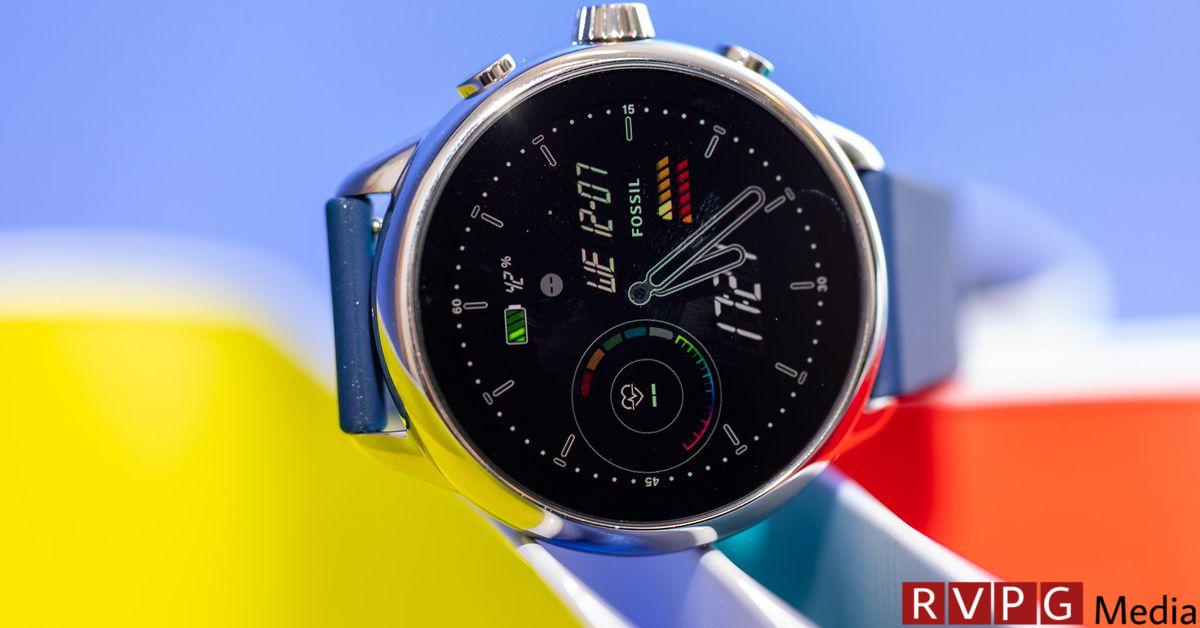When Fossil announced it was leaving the Android smartwatch space, I wasn’t surprised. The signs had been there for a while. What I didn’t expect was how sad it made me. Fossil’s smartwatches have never been the best. Their battery life was mediocre, health tracking could be questionable, and before Wear OS 3, the company was often let down by Google’s negligence. But now that Fossil has backed out, it’s leaving a huge vacuum in the Wear OS ecosystem. Who, if anyone, can fill this gap? Is there even a point at which Google and Samsung dominate this space?
It’s been a few months and I’m still not sure there’s a real answer.
In the dark days of Wear OS – even back when Android Wear was still around – Fossil soldiered on. The company continued to produce flagship, platform-agnostic smartwatches that emphasized style. That became increasingly rare. Before 2021, it wasn’t uncommon for smartwatches other than the Apple Watch to work on both Android and iOS. Wear OS 2 watches, of which Fossil made many, simply required downloading the Wear OS app on iOS or Android.
But in 2021, Google and Samsung teamed up to develop Wear OS 3. After that, Samsung gave up trying to attract iPhone users. Google’s Pixel Watch was also only available for Android. This made Fossil the main Wear OS watch that worked on both devices, but the Wear OS app was outdated, meaning Fossil had to develop its own companion app. (There was also the Montblanc Summit 3, but at $1,290 I wouldn’t call it affordable.)
It didn’t help that Google and Samsung clearly favored their own products. Google Assistant would be available on Google and Samsung watches, but would be missing from many third-party Wear OS 3 devices. Fossil eventually brought it to its watches, but it took so long that the company has since partnered with Amazon Alexa to fill the gap. Delays were common, so it’s no surprise that Fossil decided it wasn’t worth the push.
I thought a lot about Fossil when I tested the OnePlus Watch 2 – especially because it was the first time in four months that I thought to myself, “Could OnePlus be the new Fossil?” On the surface, it seems so . It’s a pretty watch, especially if you’re a fan of more classic timepieces. Battery life is excellent and far outlasts the Samsung Galaxy Watch series and the Pixel Watch series. There’s also decent fitness tracking as well as dual-frequency GPS – things that neither Samsung nor Google have implemented on their watches. It’s also competitively priced at $300. Like Fossil, it lacks LTE connectivity, EKGs, and security features, but I’ve heard from a lot of people who aren’t that interested in much more than the basics.
It ticks most of the boxes that Fossil did, except for two key points: style diversity and platform interoperability. I understand the latter. Wearables are increasingly the tool that companies use to make people happy within an ecosystem. It makes no sense for Android watchmakers to target iPhone users unless, like Montblanc, the majority of your existing customers are using them. OnePlus, like Samsung, makes Android phones.
Fossil now had a whole horde of smartwatches from various designer brands under its roof. Diesel, Armani, Michael Kors, Kate Spade and Skagen immediately came to mind. There were women’s watches with so much pavé that my eyes were blinded by bling. Skagen had that Scandinavian minimalist elegance. E-Ink hybrid watches were experimented with.
OnePlus has exactly one watch style in one size. (However, there are two colors.)
The only other serious contender for Wear OS is Mobvoi – and that’s another worrying story. Mobvoi has long had loyal fans for its TicWatch smartwatches, but that goodwill has declined sharply over the past two years. Its Snapdragon Wear 4100 watches were announced as Wear OS 3 ready in July 2021, but didn’t receive the actual upgrade until December 2023. The switch meant the loss of Google Assistant. Meanwhile, the first Wear OS 3 watch, the TicWatch Pro 5, was heavily delayed and finally launched two weeks after Wear OS 4 was announced. This watch also didn’t have Google Assistant (and still doesn’t). About a year later, Mobvoi finally announced that the Wear OS 4 beta program was open for applications.
This all sounds very familiar to Fossil. And like OnePlus, Mobvoi doesn’t offer the same range of styles or platform interoperability as Fossil.
The question that comes to mind is whether it is worth being an alternative to the tech giants. Fossil certainly didn’t think so. Mobvoi hasn’t given up and OnePlus has put its hat in the ring – but I don’t think it’s a coincidence that both have similar limitations and restrictions. It is therefore all the less surprising that truly platform-independent fitness trackers are now multi-sport watches like Garmins or significantly reduced devices like hybrid analogue devices from Withings – and that smart rings are starting to look like attractive alternatives to smartwatches, even though they are more affordable trackers to stay on the track.
I hope OnePlus and Mobvoi persevere. That would be it Good for Wear OS, if so. However, I don’t think we’ll see a wearable company like Fossil anytime soon. It takes a lot of patience to operate from someone else’s sandbox – and that’s a real shame.
